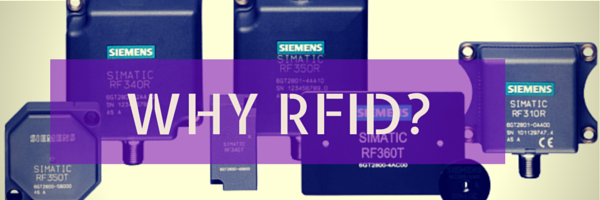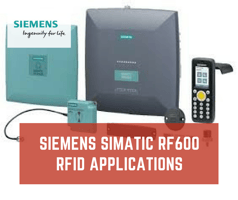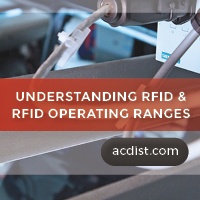Digital Factory is a term that’s often thrown around frequently, and mostly related with concepts...
Why RFID (Radio Frequency Identification)?

Radio frequency identification, or RFID, is a technology using radio waves to automatically identify people or objects. The most common usage is to store a unique number, which identifies the item, on a microchip attached to an antenna. The chip/antenna combination is called an RFID transponder or an RFID tag. This tag then transmits the identification number, and possibly other stored information, to a reader. The reader then supplies this information to a PLC system or directly to a computer via standard industrial communication methods; Ethernet, Fieldbus, etc.
Identify something not in line of sight
Line of sight identification is typically what you see done using bar codes and a laser scanner in a store checkout line. The laser must "see" the object, more precisely the bar code, for the information to be read. RF is much more forgiving; an envelope of radio energy surrounds the RFID tag, allowing it to be read from all sides and possibly with an object between the tag and the reader. The drawback is cost; bar codes are cheap, usually only the cost of ink or about $0.005, while an RFID tag can cost $0.07 to $0.25 or more for specialized applications. In many applications this cost is justifiable: contactless payments, building access, toll road access, supply chain management, inventory within a crate. Instead of requiring the object to be precisely placed in sight of the reader, RFID allows for identification regardless of the object’s orientation to the reader and even with the object placed within a container.
Store information on items and change the information dynamically
RFID tags usually contain 96-512 bits of information and a tag can be read in less than 5 ms. Tags with up to 2 KB of data are available, but require a longer read times. Current standards allow hundreds or even thousands of tags to be read simultaneously. So, an entire crate or trailer load of items can be scanned. Most tags allow you to dynamically change the ID and other stored information tens of thousands to hundreds of thousands of times. By taking advantage of a tag’s data storage and re-write capability, solutions for inventory tracking and quality control can be implemented directly on the product.
Read data only via a computing device and not by a human
It may be necessary to physically hide the RFID tag, hence the item ID and other data, in an object. Bar-coded products have a visible signature on their product packaging. A tag can be embedded in a computer to provide its mac address and equipment ID, without powering it on; a wallet could broadcast subway pass information without removing it from your pocket; tools in a maintenance truck could have their IDs and check-out/check-in times embedded inside the tool.
UHF RFID for identifying an object from far away
A significant benefit of a UHF RFID tag is that it can be read from far away. Passive UHF allows objects to be read across a room, while battery-assisted-passive and active tags can be read across buildings and in very difficult RF environments. Bear in mind however that active RFID devices need certification by the FCC, while passive and battery-assisted-passive devices do not.
RFID is a solution to material tracking, within a production environment, during inventory storage in a warehouse, and while transporting and delivering products.
You may also be interested in reading:





